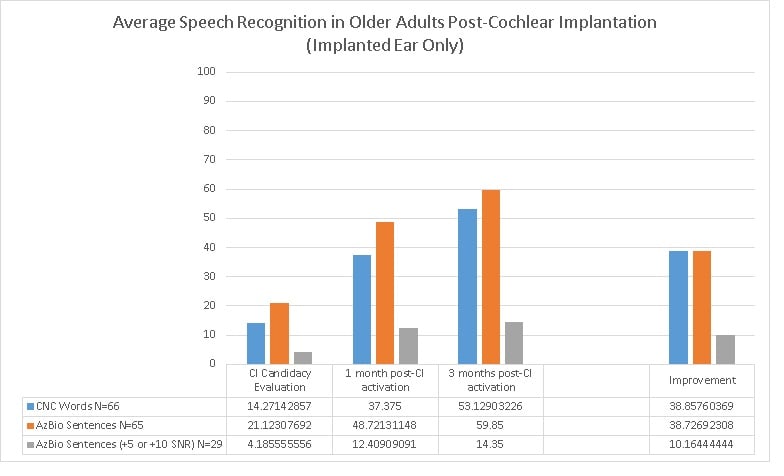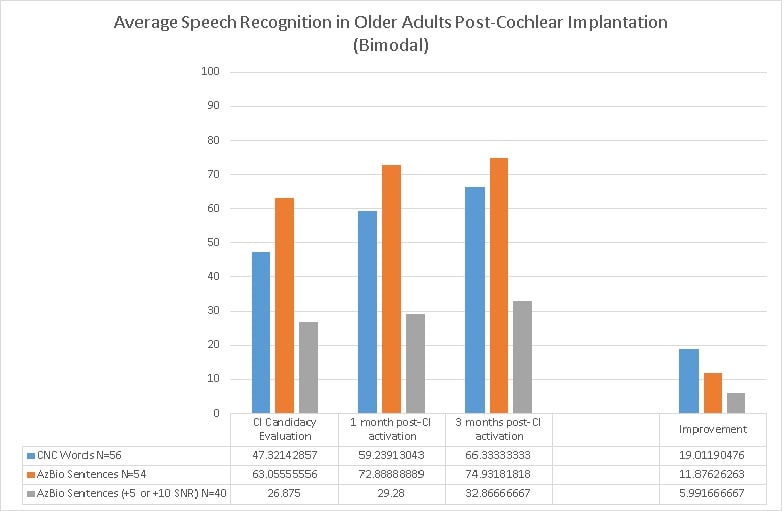Head & Neck Institute Outcomes
Hearing Implant Program
Cochlear implant outcomes in older adults
Cochlear implantation (CI) has often been considered an intervention of last resort, reserved for those patients with severe to profound sensorineural hearing loss, particularly in the case of older adults. However, more contemporary literature highlights the benefits of CI even for candidates who exceed traditional candidacy criteria, even octogenarians and nonagenerians.¹ Contemporary clinical best practices have outpaced FDA labeling and insurance coverage, including Medicare. The discrepancy between coverage and candidacy likely contributes to the significant underutilization of cochlear implant technology (98% of those who could benefit from the technology do not have it²). The CMS National Coverage Determination (NCD) has become particularly outdated (last reviewed in 2005). At the time of this writing, the NCD is currently under review and is likely to change from aided sentence recognition of < 40% to < 60%, bringing Medicare beneficiary eligibility more in line with FDA labeling.
Advancements related to hearing preservation, use of words instead of sentences, and ear-specific determination (instead of bilateral performance) have all been incorporated in Cleveland Clinic protocols for candidacy determination without reservation based on age. Review of these outcomes for adults aged ≥ 65 years suggest results on par with those reported in the literature.³ Importantly, word recognition improvement was statistically equivalent between adults aged 65 to79 and aged 80 to 95.
| Baseline | 3 Months Post-CI Activation | Improvement | |
|---|---|---|---|
| Aged 65 to 79 (N = 49) | 14.19% | 54.74% | 40.93% |
| Aged 80 to 95 (N = 23) | 14.43% | 49.47% | 35.58 |


Interestingly, less improvement in background noise was observed in older adults than in quiet. It is possible that higher level processing in older adults may be more compromised, and supplemental equipment and communication strategies may be particularly important to consider in this population. However, results suggest that older adults are good candidates for CI and consistently demonstrate benefit; therefore, Cleveland Clinic’s Hearing Implant Program continues to advocate for early identification and implantation of all CI candidates, but will not forgo CI on the basis of age alone.
